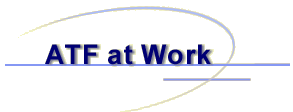


In recent years there has been a sharp decline in the overall number of ATF referrals for prosecution at the federal level. From a peak in fiscal year 1992, ATF matters sent to federal prosecutors declined by 44%, dropping from 9,885 in 1992 to 5,510 in 1998. (See graph and table.)
While ATF weapons prosecutions also were well below their 1992 high point, there was a recent upturn in this important category of cases. Weapons prosecutions rose 25% increase from 1997 to 1998, although this was still well below their 1992 peak. In contrast, ATF drug prosecutions continued a generally downward trend, going from 1,569 in 1992 to 535 in 1998. The magnitude of the 1997-1998 drop in ATF drug prosecutions was specially notable. (See graph and table.)
Contributing to these trends has been a decline in the number of ATF criminal investigators from 2,072 in 1992 to 1,779 in 1998. (See graph and table.) But because the 14% rate of this decline was considerably less than the 44% drop in all ATF referrals, it is believed that other factors besides personnel cutbacks were involved. (See table.)
When an agency's referrals go into a slump, administrators often assert that this is because its investigators are focusing on a smaller number of more significant matters. Such conclusions are always hard to quantify. One possibly useful indicator, however, is annual change in the prison time that results from an agency's investigations. Under federal sentencing guidelines, higher prison times are generally assigned to what society judges as more serious crimes. In the case of the ATF, no clear trend towards more (or less) serious sentences has occurred. In recent years the agency's median sentences initially went up but then started to decline. In 1996, the median sentence -- half got more, half got less -- peaked at 57 months. In the next year, the median dropped to 48 months. In 1998, it went to 46 months. (See table.)
The data show marked differences in the trends of ATF prosecutions under different statutes. As noted earlier, the trends for ATF referrals and prosecutions have generally been down. While there was a resurgence in ATF weapons referrals in 1998, this was true only for a single lead charge: 18 USC 922 (illegal weapons procedures). This statute is the most commonly used by ATF. (See graph.) Steady declines were registered in ATF's application of all other important weapons statutes. Sharp declines were observed for all drug-related lead charges, as noted earlier. Declines were also seen in conspiracy to defraud charges under 18 USC 371. (See table.)
Low but generally level enforcement activity occurred under another significant ATF responsibility, that for explosives. Here referrals under 18 USC 844 (explosives - illegal actions) -- the most commonly used lead statute -- were steady at around 100 per year throughout the 1992 through 1998 period. Referrals under other explosives statutes, while relatively uncommon, did decline some with a particular dip in 1998. (See graph and table.)
ATF has long been the pre-eminent federal law enforcement agency in the weapons area. While this is still the case, its relative share of the workload has slipped. For example, in 1992, ATF was responsible for recommending 88% of all federal weapons prosecutions under 18 USC 922 -- the most commonly used lead charge -- and other agencies handled the remaining 12%. By 1998 the share handled by other agencies had doubled to one in four (24%). No one agency, however, has emerged to challenge ATF since many agencies (including state and local police) are represented in this 24%. FBI's share of weapons prosecutions, for example, is still small although it went from 4 to 8% of this total between 1992 and 1998. (See graph.)
| ATF at Work | TRAC-ATF |
